IAI: Aiming High : What is remarkable about Israel is that despite its size and less-than-friendly neighbours—one of whom regularly threatens annihilation—it continues to survive. The country has not just endured, but thrived, and dominates the agenda of West Asia. What is remarkable about the government owned Israel Aerospace Industries Ltd (IAI) is that notwithstanding its humble beginnings—servicing and refurbishing a few dozen aircraft—half a century later it is the foremost industrial corporation in Israel. The company has consistently played a part in the technological and economic progress of the country and its security.
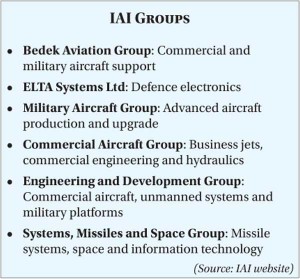 Today, with about 17,400 employees, it is Israel’s largest aerospace and defence enterprise. . It is already the nation’s leading industrial exporter and is fast emerging as a key source of unmanned drones and missiles for the global military market. Reason enough for it to have an impressive presence at Aero India 2011.Apart from producing fighter aircraft, the state-owned behemoth builds civilian aircraft—like the G100/G150 and G200/G250 mid-size business jets—for US manufacturer Gulfstream. It undertakes maintenance, reconfiguration and upgrade of foreign-built civilian and military aircraft. IAI also focuses on Unmanned Air Vehicles (UAV) and high-tech missiles and its expertise extends to weapons and other systems for ground and naval forces.Many of its products are designed for the Israel Defence Forces (IDF), while others are exported to about 70 countries. 15 per cent of every new F16, for instance, consists of Israeli systems and many of these from IAI.
Today, with about 17,400 employees, it is Israel’s largest aerospace and defence enterprise. . It is already the nation’s leading industrial exporter and is fast emerging as a key source of unmanned drones and missiles for the global military market. Reason enough for it to have an impressive presence at Aero India 2011.Apart from producing fighter aircraft, the state-owned behemoth builds civilian aircraft—like the G100/G150 and G200/G250 mid-size business jets—for US manufacturer Gulfstream. It undertakes maintenance, reconfiguration and upgrade of foreign-built civilian and military aircraft. IAI also focuses on Unmanned Air Vehicles (UAV) and high-tech missiles and its expertise extends to weapons and other systems for ground and naval forces.Many of its products are designed for the Israel Defence Forces (IDF), while others are exported to about 70 countries. 15 per cent of every new F16, for instance, consists of Israeli systems and many of these from IAI.
Making History
IAI was established in 1953 as Bedek Aviation Company with the aim of supporting the defence of the beleaguered five-year old nation. It is doubtful if the 70 dedicated employees operating from a ramshackle site on the sand dunes of Israel’s Lod Airport could have imagined the heights their company was destined to attain.
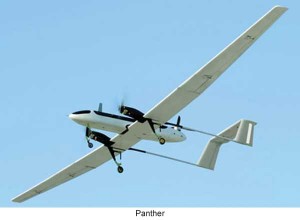 Much of IAI’s world-class expertise was born out of sheer necessity. It worked closely with the Israeli Air Force (IAF) maintaining a sharp practical focus. Israel has been at war through much of its history—as a result, IAF pilots are skilled in aerial warfare, and know exactly what they want from their aircraft. It made sense for the IAF to send its fighters, helicopters, and aviation support systems for modification, upgrade and improvement to IAI. As a result of its pioneering efforts in refurbishment and enhancement, IAI quickly became a leader in the field. Israel has always hankered after autonomous control of its lethal weapons. It insists that it be allowed to install its own specialised weapons and equipment—especially radar, electronic warfare (EW) and communications systems—even on foreign-sourced combat aircraft.IAI frequently provides the technological underpinning that makes this policy viable. Innovative to the core, it constantly tries to develop new and improved weapons and systems for the IDF.
Much of IAI’s world-class expertise was born out of sheer necessity. It worked closely with the Israeli Air Force (IAF) maintaining a sharp practical focus. Israel has been at war through much of its history—as a result, IAF pilots are skilled in aerial warfare, and know exactly what they want from their aircraft. It made sense for the IAF to send its fighters, helicopters, and aviation support systems for modification, upgrade and improvement to IAI. As a result of its pioneering efforts in refurbishment and enhancement, IAI quickly became a leader in the field. Israel has always hankered after autonomous control of its lethal weapons. It insists that it be allowed to install its own specialised weapons and equipment—especially radar, electronic warfare (EW) and communications systems—even on foreign-sourced combat aircraft.IAI frequently provides the technological underpinning that makes this policy viable. Innovative to the core, it constantly tries to develop new and improved weapons and systems for the IDF.
In February 1980, IAI launched an ambitious programme to design and manufacture the Lavi, a multi-role combat aircraft. But the multi-billion dollar project received a setback when the Israeli government considered the project to be unaffordable. Besides, political pressure from the US government, which feared that success of the Lavi could impinge on the demand for the F16. The project was shelved in 1987. A grievous blow indeed but ultimately a blessing in disguise because it forced the company to focus on UAVs.
Unmanned and Deadly
Israel’s legendary battle-hardened military machine has always generated unique and specialised needs—from tanks to EW to combat aircraft. It is increasingly plumping for UAVs. “UAVs are the future and will play a major role in asymmetric warfare against insurgent groups and non-state actors,” says Yair Shamir, IAI’s Chairman of the Board of Directors. IAI-MALAT, a division of IAI’s Military Aircraft Group, is a world leader in UAV technology. Its UAVs have notched up more than 750,000 operational flight hours of intelligence gathering, dissemination and targeting missions for 48 customers on four continents.
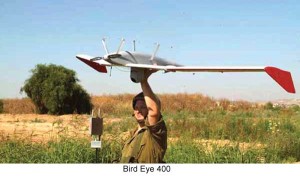 Introduced in 2006, its best-known product the Heron,, is a Medium Altitude Long Endurance (MALE) UAV and is used for both strategic and tactical missions. An enhanced version of the Heron, called Heron TP or Eitan, was developed for the IAF. Heron has proved popular with countries around the globe, India being one of them. IAI is among the world’s top two developers of missiles with loitering capability.
Introduced in 2006, its best-known product the Heron,, is a Medium Altitude Long Endurance (MALE) UAV and is used for both strategic and tactical missions. An enhanced version of the Heron, called Heron TP or Eitan, was developed for the IAF. Heron has proved popular with countries around the globe, India being one of them. IAI is among the world’s top two developers of missiles with loitering capability.
Also being readied for action is a tilt-rotor UAV named Panther. This machine combines the characteristics of a fixed-wing aircraft with helicopter-like hover capability which enables a runway-free operations from unprepared surfaces. With an automatic flight-control system, the transition from the hover to forward flight and vice versa, is smooth and does not even need an external pilot. Panther, which weighs 65 kg, has three ultra-quiet electric motors, and six-hour loiter capability up to three km altitude, with a radius of operation of over 60 km. It carries IAI’s Mini- Plug-in Optronic Payload (POP), a camera with a laser rangefinder and laser designator. The smaller 12-kg Mini Panther can remain on station for approximately two hours and is intended for more modest missions.
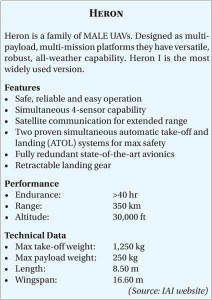 The system is expected to be operational in 2011. UAVs are likely to become ubiquitous over the next decade or two. The US military campaign in Afghanistan prominently features MQ-1 Predator and MQ-9 Reaper UAVs armed with Hellfire AGM-114 air-to-ground missiles—these have taken out numerous Taliban and jihadist luminaries in recent months. China is ramping up production of UAVs in an apparent effort to catch up with USA and Israel. Russia has invested heavily in their development, but its systems are inferior to those of Israel, due to their high acoustic signatures and insufficient miniaturisation of mission payloads.Significantly, Russia’s first ever purchase of a foreign weapons system was an all-UAV affair. In 2010, it acquired from IAI the Bird Eye 400 mini-UAV, I-View MK 150 tactical drone and the medium-range Searcher Mark 2. It is also eyeing the much-sought-after Heron. Other countries across the globe are acquiring UAVs on a smaller scale since most lack the Israelis’ level of experience in unmanned operations. The IAF itself is planning to switch to UAVs in rather dramatic fashion. It is expected that within 10 to 12 years a third of IAF aerial platforms will be unmanned; this could increase to 50 per cent by 2030. Most likely, IAI will be the main supplier.
The system is expected to be operational in 2011. UAVs are likely to become ubiquitous over the next decade or two. The US military campaign in Afghanistan prominently features MQ-1 Predator and MQ-9 Reaper UAVs armed with Hellfire AGM-114 air-to-ground missiles—these have taken out numerous Taliban and jihadist luminaries in recent months. China is ramping up production of UAVs in an apparent effort to catch up with USA and Israel. Russia has invested heavily in their development, but its systems are inferior to those of Israel, due to their high acoustic signatures and insufficient miniaturisation of mission payloads.Significantly, Russia’s first ever purchase of a foreign weapons system was an all-UAV affair. In 2010, it acquired from IAI the Bird Eye 400 mini-UAV, I-View MK 150 tactical drone and the medium-range Searcher Mark 2. It is also eyeing the much-sought-after Heron. Other countries across the globe are acquiring UAVs on a smaller scale since most lack the Israelis’ level of experience in unmanned operations. The IAF itself is planning to switch to UAVs in rather dramatic fashion. It is expected that within 10 to 12 years a third of IAF aerial platforms will be unmanned; this could increase to 50 per cent by 2030. Most likely, IAI will be the main supplier.
According to IAI sources, UAV-based EW and cyber warfare will be a major emerging opportunity. UAV design goals will focus on how low-cost systems can undertake multiple tasks and provide mutual support. Active Electronically Scanned Array (AESA) technology with its ability to detect small objects with high discrimination, will be essential. EW capabilities will be inbuilt and stealth will be essential. If not too expensive, UAVs can be launched in large numbers to overwhelm enemy defences.
Therefore, quantity will be the primary consideration, the more UAVs produced for a given investment, the better. The bottom of the performance spectrum is also steadily gaining importance. IAI is actively working on several new UAV designs and many will be cheap, light and practically invisible.
The company has reportedly tested a six inch, butterfly-like UAV with four flapping, transparent wings stable enough to record live video clip of a small crowd. Similar UAVs could well be snapped up by the burgeoning homeland security market.




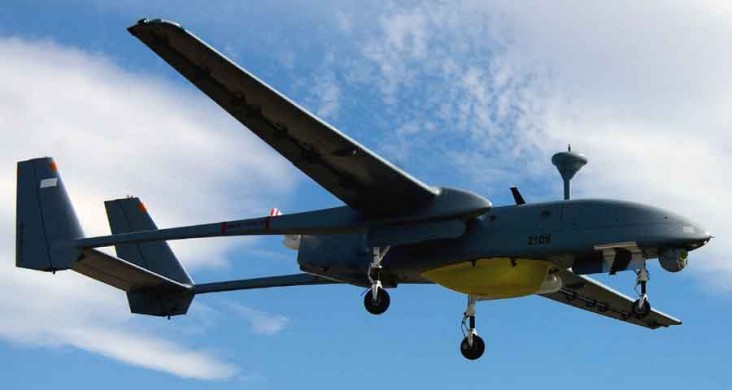
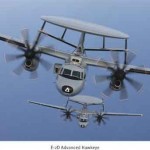
It is anything but difficult to fall prey to bumbling programmers, yet in the wake of understanding this, I trust you never must be a survivor of programmers who can’t finish the activity given to them. I was at one time a casualty yet not any longer and this is on the grounds that I have discovered the best programmer ever and I wish to tell you that (cryptocyberhacker @ gmail com), Whatsapp:+15188160274 is as well as can be expected ever consider and he generally convey and he his solid.